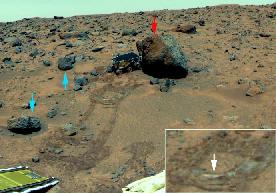This image shows different classes of rocks explored by the Rover.
Click on image for full size
Image from: JPL/NASA
Classes of Martian Rock
Even though the rocks seem to be much the same, scientists can see three basic differences in these rocks. These differences help them figure out more about weathering processes on Mars and where the soils surrounding the rocks may come from. The three classes are:
- dark,
- bright, redder than the dark rock, but not at red as pink
- pink, perhaps covered with a red substance which has an iron oxide (rust) component
Different classes are pointed out in the image to the left. Green arrows show dark rocks, the white arrow shows pink rock.
Barnacle Bill was a dark rock, suggesting that it may be a
basalt.
Scooby Doo was a pink rock.
Scientists are trying to figure out where the rocks came from, whether 1.) from the impact of a crater, or 2.) from flowing water. Differing weathering properties of the rocks may help scientists figure that out.
You might also be interested in:
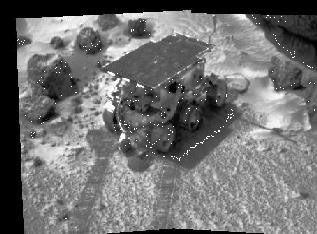
One of the objectives of the Mars Pathfinder mission was the examination of the composition of the soil and how it was laid down. As the Rover traversed the surface exploring the rocks of Mars, it also
...more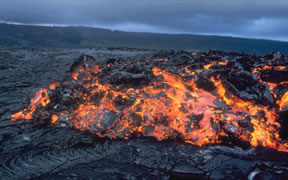
Basalt is an extrusive igneous rock that is very dark in color. It is the most common type of rock in the Earth's crust and it makes up most of the ocean floor. It is made of many dark colored minerals
...more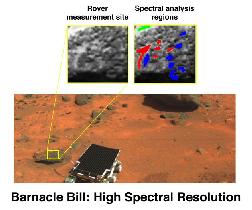
The rocks explored by the Mars Pathfinder's Rover are classified into two groups according to how they eroded. Rocks put in place as a result of an impact which forms a crater are usually much less eroded
...more
The Mars Odyssey was launched April 7, 2001, from Florida. After a six-month, 285 million-mile journey, the Odyssey arrived at Mars on October 24, 2001. The Odyssey is in its aerobraking phase right now.
...more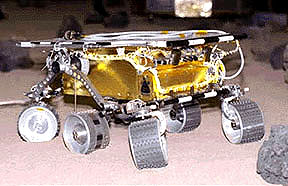
The Mars 2005 mission is still in the planning stages. It is set to launch in the year 2005.
...more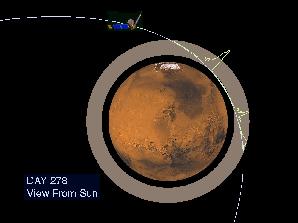
The Mars Global Surveyor reached Mars in September of 1997. But it didn't make it into its final mapping orbit until February 1999. What took so long? Surveyor needed to reach a near-circular, low-altitude
...more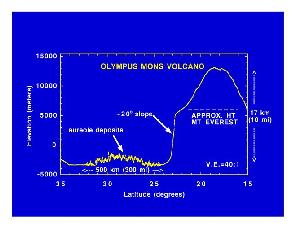
Mars Global Surveyor carries an instrument which measures the heights of things. This instrument is called an altimeter, or "altitude-meter". The graph to the left shows the results returned from Mars
...more


